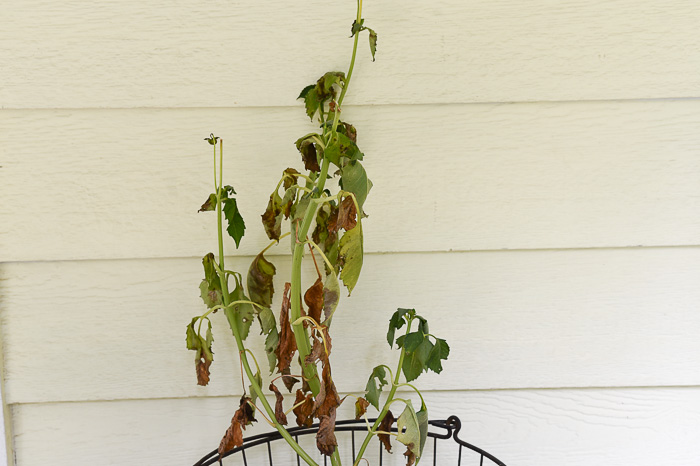Horticulture Tips: What Plants Don't Like Epsom Salt and Why
Horticulture Tips: What Plants Don't Like Epsom Salt and Why
Blog Article
Explore Why Some Plants Deny Epsom Salt as a Nutrient Resource
In the detailed world of plant nourishment, the rejection of Epsom salt as a practical nutrient source by some plants presents a fascinating quandary. The reasons behind this careful actions delve into an intricate interplay of plant absorption systems, the one-of-a-kind chemical structure of Epsom salt, and plant-specific nutrient preferences.
Plant Absorption Devices
In diving into the intricate realm of plant absorption systems, it comes to be evident that the procedure is governed by a sophisticated interaction of physical characteristics and molecular pathways. Plants absorb nutrients primarily with their origins, making use of numerous transport systems to uptake necessary components such as nitrogen, phosphorus, potassium, and magnesium. Magnesium, an important part in chlorophyll synthesis and enzyme activation, plays a crucial duty in plant growth and development.
The absorption of magnesium entails numerous steps, beginning with its availability in the dirt service. When dissolved, magnesium ions are taken up by plant origins via specific transport healthy proteins embedded in the cell membranes. These healthy proteins assist in the activity of magnesium across the root cell wall surfaces and right into the plant's vascular system, where it is after that distributed to various cells to support numerous physical functions.
Comprehending the elaborate devices behind magnesium absorption in plants drops light on how this crucial nutrient contributes to general plant health and productivity. By maximizing magnesium uptake pathways, cultivators can enhance crop yields and quality, highlighting the relevance of understanding plant absorption dynamics for lasting agriculture techniques.
Epsom Salt Chemical Framework
The chemical structure of Epsom salt, additionally known as magnesium sulfate heptahydrate, exposes a distinct setup of aspects that add to its special properties and applications. The 7 water particles are loosely adhered to the magnesium sulfate substance, permitting it to dissolve quickly in water and be readily taken up by plants through their roots.
The crystal framework of Epsom salt creates monoclinic prisms, which are elongated crystals with parallel ends. This crystal form affects the physical properties of Epsom salt, such as its texture and solubility. Comprehending the chemical structure of Epsom salt is essential for comprehending its actions as a nutrient source and its communications with plants in horticultural and agricultural practices.
Plant-Specific Nutrient Preferences
Plants display unique choices for certain nutrients, stressing the relevance of understanding their individual needs for optimum growth and development. Comprehending these plant-specific nutrient preferences is crucial for taking full advantage of plant returns, enhancing ornamental plant growth, and advertising general plant health and wellness.

Plant-specific nutrient choices can likewise differ based on whether the plant is a monocot or dicot. By customizing nutrient supplementation to satisfy the precise needs of each plant species, growers can enhance plant click here for info growth, reduce nutrient waste, and support lasting farming practices.

Dirt Ph and Nutrient Uptake
Provided the crucial role of plant-specific nutrient preferences in enhancing growth and health and wellness, comprehending the connection in between soil pH and nutrient uptake ends up being extremely important. Dirt pH plays a critical duty in establishing the availability of essential nutrients for plant uptake. Various plants have differing pH preferences for ideal nutrient absorption. Acidic soils with a reduced pH are beneficial for plants like blueberries and azaleas, while alkaline soils with a greater pH suit plants such as lavenders and clematis.
Soil pH influences the chemical types of nutrients in the dirt. In acidic soils, nutrients like manganese, aluminum, and iron can end up being a lot more offered, yet too my company much level of acidity can bring about poisoning problems. On the various other hand, alkaline dirts might restrict the schedule of nutrients like zinc, iron, and copper, affecting plant development. Preserving the ideal pH level in the soil is crucial for guaranteeing that plants can efficiently uptake the needed nutrients for their healthy development and performance.
Hereditary Consider Nutrient Uptake
In the realm of plant nourishment, the interaction of genetic aspects dramatically affects the uptake of important nutrients essential for plant growth and growth. Hereditary aspects play a critical duty in forming a plant's capacity to take in and use nutrients properly.
In addition, genetic variables additionally establish the efficiency of nutrient uptake mechanisms within plants. As an example, some plants may have hereditary qualities that improve their capacity to feed on nutrients from the dirt successfully, giving them a competitive benefit in nutrient-poor environments. On the various other hand, genetic variants can additionally lead to limitations in nutrient uptake, ensuring plants a lot more prone to deficiencies even when nutrients Read More Here are plentiful in the soil.
Recognizing how genetic variables influence nutrient uptake is critical for creating methods to enhance plant nourishment and boost crop productivity in numerous farming setups. By unraveling the hereditary mechanisms included in nutrient uptake, scientists can work in the direction of creating genetically enhanced plant varieties with boosted nutrition acquisition abilities.
Conclusion

In the elaborate world of plant nourishment, the denial of Epsom salt as a feasible nutrient source by some plants positions an interesting conundrum. what plants don't like epsom salt. Comprehending these plant-specific nutrient choices is vital for taking full advantage of plant yields, improving decorative plant development, and promoting overall plant health
By customizing nutrient supplementation to meet the specific requirements of each plant types, cultivators can enhance plant development, minimize nutrient waste, and support sustainable farming methods.
In the realm of plant nutrition, the interplay of genetic variables significantly affects the uptake of vital nutrients vital for plant development and development. Understanding these complexities in plant nutrient uptake is important for enhancing plant growth and health and wellness in agricultural methods.
Report this page